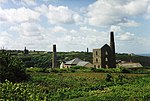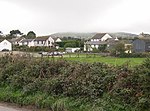St Agnes Lifeboat Station
Lifeboat stations in CornwallUse British English from March 2017
St Agnes Lifeboat Station was opened in 1968 and is based in St Agnes, Cornwall, South West England. It is operated by the Royal National Lifeboat Institution (RNLI).For a long time, the station's lifeboats were sponsored by BBC TV's Blue Peter programme, mostly being named Blue Peter IV.In 1978, and again in 2005, the Duke of Kent visited the station in his role as president of the RNLI.The station has always been an inshore lifeboat station, and until October 2015 operated a D-class lifeboat called Blue Peter IV. The current boat, XKalibur (D-787), was funded by The Jaguar Enthusiasts Club and donations from the local and wider community.
Excerpt from the Wikipedia article St Agnes Lifeboat Station (License: CC BY-SA 3.0, Authors).St Agnes Lifeboat Station
Quay Road,
Geographical coordinates (GPS) Address Website External links Nearby Places Show on map
Geographical coordinates (GPS)
| Latitude | Longitude |
|---|---|
| N 50.319166666667 ° | E -5.2016666666667 ° |
Address
St Agnes Lifeboat Station
Quay Road
TR5 0RU , St. Agnes
England, United Kingdom
Open on Google Maps









